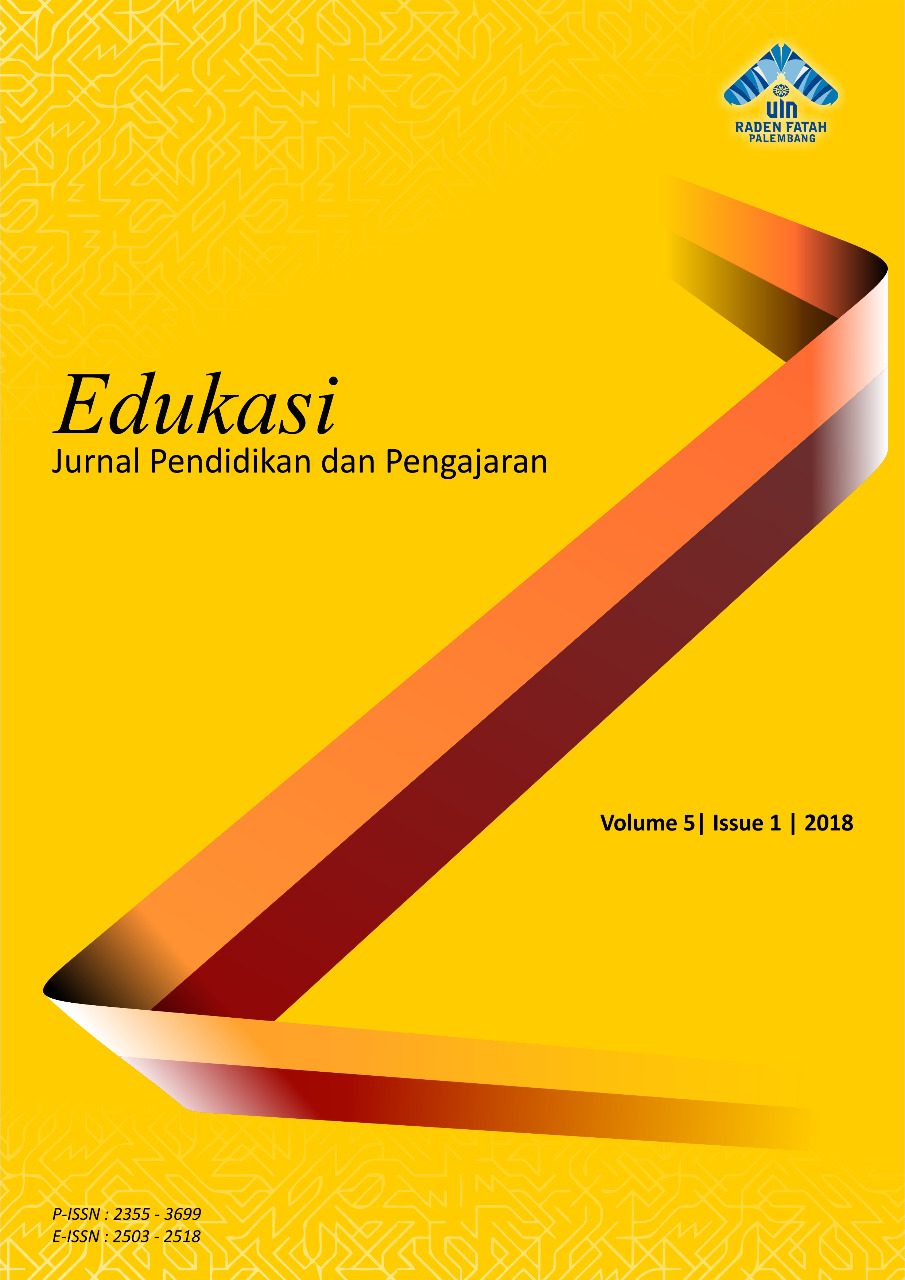Learning to listen: Listening Strategies and Listening Comprehension of Islamic Senior High School Students
DOI:
https://doi.org/10.19109/gppjce77Keywords:
listening strategies, listening comprehensionAbstract
The purpose of this research was to identify the correlation and the influence between listening strategies and listening comprehension. The eleventh grade students were selected as participants of this study. The instruments used in this research were listening strategies questionaire adapted from Lee (1997) and modified by Ho (2006) (as cited Golchi, 2012), and listening comprehension test conducted to measure students’ listening comprehension. Pearson product moment, regression analysis, R-square were used to find out the correlation and the influence between variables. The result revealed that there was a significant correlation between listening strategies and listening comprehension with r = .516. Besides, there was also a significant influence of listening strategies on listening comprehension with 26.6 %. It indicated that one of non-linguistic factors had essential contribution in improving students’ listening comprehension. This study could have implications for English language teachers, course designers, learners, and text book writers.
References
Afshar, H. S., & Hamzavi, R. (2014). The relationship among reflective thinking, listening anxiety and listening comprehension of Iranian EFL learners: does proficiency make a difference? Issues in Language Teaching (ILT), 2(3), 237-261.
Amin, I. A. R., Aly, M. A. S., & Mohammed, A. M. (2011). A correlation study between EFL strategic listening and listening comprehension skills among secondary school students (Unpublished Masters’ thesis). Benha University, Benha, Egypt.
Bidabadi, F. S., & Yamat, H. (2011). The relationship between listening strategies used by Iranian EFL Freshman university students and their listening proficiency levels. English Language Teaching, 4(1), 26-32.
Brown, H. D. (2004). Language assessment: Principles and classroom practices. London, England: Longman, Inc.
Creswell, J. W. (2005). Educational research: Planning, conducting, and evaluating quantitative and qualitative research (2nd ed.). Upper Saddle River, NJ: Pearson Education, Inc.
Creswell, J. W. (2012). Educational research: Planning, conducting, and evaluating quantitative and qualitative research (4th ed.). Upper Saddle River, NJ: Pearson Education, Inc.
Fraenkel, J. R., Wallen, N. E., & Hyun, H. H. (2012). How to evaluate research in education (8th ed.). New York, NY: McGraw-Hill.
Gilakjani, A. P., & Sabouri, N. N. (2016). Learners’ listening comprehension difficulties in English language learning: A literature review. English Language Teaching, 9(6), 123-133.
Golchi, M., M. (2012). Listening anxiety and its relationship with listening strategy use and listening comprehension among Iranian IELTS learners. International Journal of English Linguistic, 2(4), 115-128.
Gonen, M. (2009). The Relationship between Fl Listening Anxiety And Fl Listening Strategies: The Case Of Turkish Efl Learners. International Conference On Educational Technologies.
Huy, L. H. T. (2015). An investigation into listening strategies of efl students within the high school setting. Asian Journal of Educational Research, 3(4), 21-34.
Johnson, B., & Christensen, L. (2012). Educational research: Quantitative, qualitative, and mixed approaches (4th ed.). Thousand Oaks, CA: SAGE Publications, Inc.
Liu, H. J. (2008). A study of the interrelationship between listening strategy use, listening proficiency levels, and learning style. ARECLS, 5(4), 84-104.
O’Malley, J. M., & Chamot, A. U. (1990). Learning strategies in second language acquisition. Cambridge:Cambridge University Press.
Retabi, Z., & Amirian, Z. (2013). Use of metacognitive strategies in listening comprehension by iranian university students majoring in english: a comparison between high and low proficient listeners. Journal of Studies in Education, 1(3), 140-154.
Zhang, Y. (2012). The impact of listening strategy on listening comprehension. Theory and Practice in Language Studies, 2(3), 625-629.
Downloads
Published
Issue
Section
License
Copyright (c) 2018 Edukasi: Jurnal Pendidikan dan Pengajaran

This work is licensed under a Creative Commons Attribution-NonCommercial-ShareAlike 4.0 International License.
After the manuscript is accepted for publication, authors will be required to sign a copyright transfer form. Copyright will be transferred to State Islamic University of Raden Fatah, Palembang, South Sumatra, Indonesia, via e-mail. A copyright form will be sent to you via e-mail after the accepted manuscript has been submitted.











